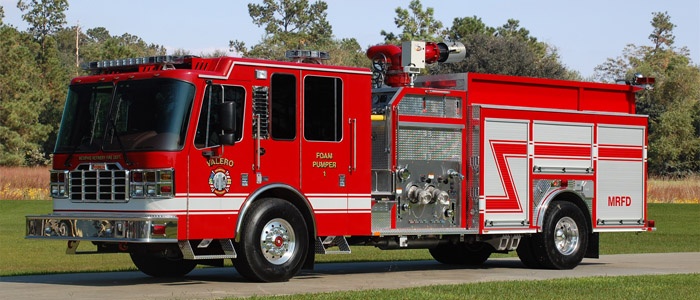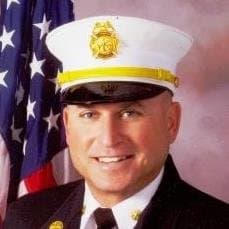The purchase of a new piece of fire apparatus represents a significant capital purchase for any fire department. Baseline pumpers start in the neighborhood of $350K to $450K; it doesn’t take long for the price tag on a new piece of aerial apparatus to exceed $800K.
The planning process should start immediately upon a department determining the need to purchase a new piece of fire apparatus. Selecting the right fire apparatus for a department’s needs is a detailed job requiring hours of research.
It Should be a Team Effort
There will be many factors to consider when developing the specifications for that new fire truck so your department should use a team approach for such a project. Keep in mind that there are many stakeholders for a piece of fire apparatus:
- The End Users (The firefighters and officers that will use and care for the apparatus throughout its life-cycle);
- The Maintenance and Repair Folks (The Emergency Vehicle Technicians (EVTs) or mechanics that will be responsible for maintenance and repairs for the vehicle during its life-cycle);
- The Training Folks (The training staff that will develop and deliver any training for the End Users on how to use their new apparatus);
- Management (The operational chief officers who provide overhead management for the End Users, e.g., battalion or division chiefs);
- The Purchasing Folks (Those people, either within the department or from another department of local government, who will manage the actual purchase of the vehicle once the specifications have been developed); and
- The Apparatus Vendor (If your department does not have to go through a competitive bid process, as is the case with some volunteer fire departments, having vendor representation on your project team can be a real asset).
When assembling your apparatus project team, your department will find it very beneficial to ensure that each of the above groups is appropriately represented on the project team.
Start with the End in Mind
The first task for the project team should be to determine the intended purpose for the new apparatus. A good question that the team should seek to answer is, “What tactical functions should firefighters and officer be able to accomplish using the apparatus and its equipment?”
For this discussion today, I’ll focus on determining what your department’s next pumper, or engine, should “look and act” like. The purchase of a new pumper is a great opportunity to improve the safety, effectiveness and efficiency for your department’s most critical emergency response resource.

Source: Neville Apparatus
In today’s world, a pumper is not just a vehicle used for firefighting operations. The crews that will staff that pumper respond to a wide variety of emergency calls for service, e.g., medical emergencies, calls involving hazardous materials, vehicle extrication situations, and more.
Look at your department’s call types for the past three to five years and I believe you’ll see that fire suppression calls are a small percentage of the total calls for service your new pumper will be used for. So why specify a pumper with capabilities and equipment that are 90 percent or more focused on fire suppression?
Instead, look to specify a pumper that has the appropriate compartment space to accommodate the equipment and protective clothing that your all-hazard firefighters need when they respond to those hazardous materials releases, vehicle crash extrications, medical emergencies and technical rescues.
NFPA 1901: Standard for Automotive Fire Apparatus, 2016 Edition, provides outstanding guidance and direction for an apparatus specification team in Annex B of the standard, Specifying and Procuring Fire Apparatus. The Annex provides a comprehensive listing of those areas for which the project team should collect and analyze information to best answer the question I mentioned earlier, “What tactical functions should firefighters and officer be able to accomplish using the apparatus and its equipment?”
Some Basic Project Management
Project management in general need not be complicated. At its core, project management is focused on answering simple questions:
- What are we looking to accomplish?
- Where will we get together to work on the project?
- Who must be involved in the various aspects of the project?
- How will we work together as a team?
- When do we get started, how often will we meet, and when must we be finished?
- How much time and money do we have to work with?
Having a strong and identified team leader is crucial for successful project management. The team leader plays a key role in: maintaining the level of enthusiasm of the group members; ensuring the proper mix of people, resources and tools for the required tasks; and creating and sustaining a shared sense of urgency to bring the project to completion.
In my experience, successful project teams must have:
- A shared desired outcome;
- Active involvement from all the team members;
- Excellent communication and access to project information;
- Specific dates for completion of tasks; and
- All the required tools (when needed) to finish.
Here are 12 steps that can help in organizing your project and its participants (Download Checklist):
- Assemble the project team.
- Identify a project team leader.
- Determine the project’s objective and specific desired outcome. Write it down.
- Identify all the tasks that must be completed to achieve the project’s objective and desired outcome. Write each task down on a Post-It note and stick it up on a wall or bulletin board.
- Once all the tasks have been identified and posted, rearrange the tasks into a logical sequence for completion.
- Once you have the completion sequence ironed out, create a timeline for the project. A simple way to construct a timeline is to estimate how long it will take to complete each task. Look for opportunities to consolidate tasks into the same spot on the timeline, that is, those tasks that can be completed at the same time.
- Create a Task Management Table. Each task should be clearly described, a person or persons assigned to complete the task, and a deadline for completing the task.
- Identify any factors that could adversely influence or limit the project team in its work. These could be beyond your control (Adverse weather or illnesses affecting team members) and factors that are in your control (time and money).
- Organize your team’s internal communications. Create a calendar for scheduling work sessions, status report meetings, project completion milestones. Determine how individual team members will communicate with each other and with the team leader.
- The team leader should ensure that all team members always know the status of the project. Everyone should either be waiting for information or the outcome of an ongoing activity, or actively working on obtaining information or finalizing an activity.
- For any major problems or setbacks, get the group together to work out new scenarios and dates of completion.
- Celebrate the big milestones and victories!














